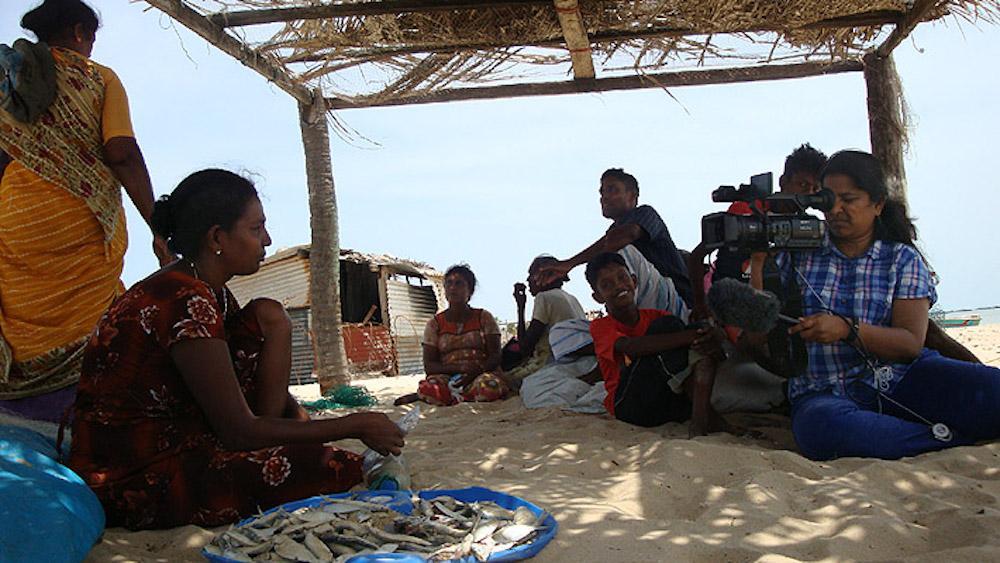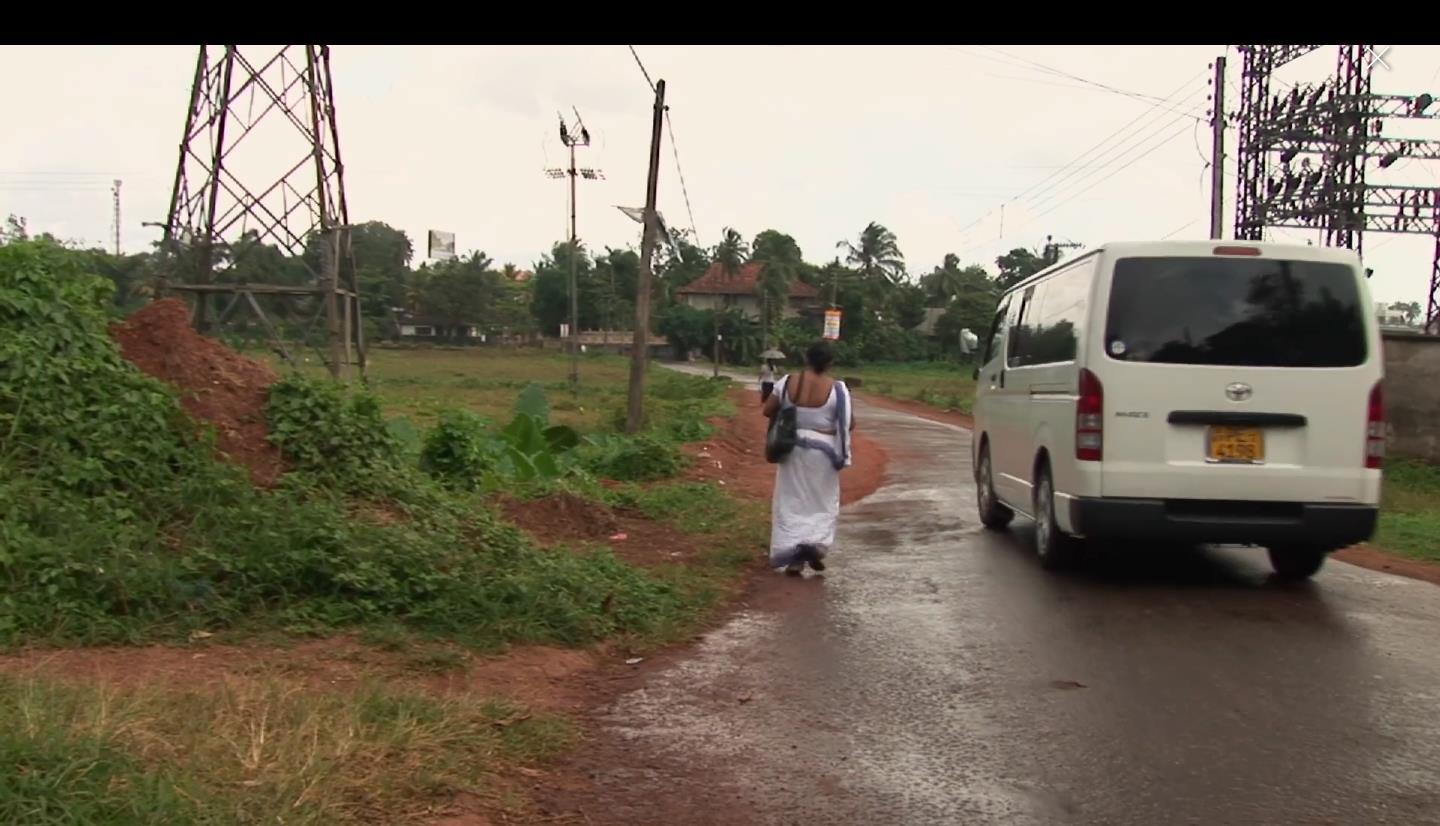Captive Portraits: White Van Stories by Leena Manimekalai
When she visited Sri Lanka in 2013 for a literary conference, filmmaker Leena Manimekalai first heard about the forced disappearances in the country, an ongoing phenomenon since the 1980s. After she met some of the families who had had members abducted by the state—with accounts often mentioning a white van—and people from human rights organisations working on the ground, Manimekalai collected several hours of footage, building an archive of the grief and loss. Inspired by the resilience of the people she met—many of them women—Manimekelai decided that she would use her cultural capital to share their struggle and hope, as they fight all odds for the return of their children. White Van Stories premiered on Channel 4 in 2014, bringing together Manimekalai’s documentation around the long history of involuntary disappearances from the 1980s in Sri Lanka. With a sensitive lens and through painstaking conversations, Manimekalai reached out to people who lost children, spouses, and some who lost entire families, and who continue to challenge the state’s silence and complicity. In an interview, Manimekalai explains that her Tamil identity was not the sole reason for making the film and that her work continues to be one of the platforms through which she studies and deals with Sri Lanka’s ethnic crisis as an activist.

With her technique of laying scenes one over another, Manimekalai frames the landscape with the presence of the white vans as they pass—persistent and unavoidable.
The film follows seven women across the eastern, southern and northern provinces, from Sinhala, Tamil and Muslim communities. Manimekalai encountered several obstacles in her efforts to document these narratives. The women recount their tales of horror, often belatedly—sons recruited to fight, daughters kidnapped by the LTTE, husbands taken away in the middle of the night—and while saddled with dejection, they never give up hope, something that is evident in the ways in which they persevere. For instance, Asheela in Hambantota, having lost her father, is an open critic of the then incumbent Prime Minister, berating him for his shallow campaigns that initially rested on human rights issues but swiftly became only a stepping stone to more war crimes. Sandya Ekneligoda, the wife of Sinhalese cartoonist and journalist Prageeth Ekneligoda, who disappeared in 2010, gently displays her collection of files. They contain appeals to collective bodies and the UN, which never amounted to much. She explains her devotion to Buddhism as a way of life that brings her great peace in the face of immense loss. In Kilinochchi, Chandra breaks down as she writes her umpteenth letter to her now-disappeared daughter but grasps at the weighted belief that she is still alive somewhere.

The women are grounding factors: they centralise the trauma that they bear as survivors but also as family members of those who disappeared.
As Manimekalai states in the interview, white van disappearances continued even after the war, and the state systematically nurtured a reign of terror, disallowing any expression of dissent. Due to the heavy military presence—a lot of which is shown in the film—Manimekalai found herself severely surveilled with attempted intimidation and detention, in one instance even submitting her tapes for questioning. For Manimekalai, a primary objective for making the film was the manner in which state-sponsored violence had resulted in the eclipse of an entire generation, the dismantling of communities and the sowing of a deep mistrust among citizens. By documenting the trauma and tragedy that befell so many of these women, Manimekalai bulldozes the impenetrability imposed by the Sri Lankan state with her own “guerrilla filmmaking.”

Leena Manimekalai records an interview at Pesalai in Mannar District, Sri Lanka.
In an early part of her poetic voiceover that fades in and out between scenes, Manimekalai says, “This island is an interrogation room.” Her camera captures disembodied military boots, marking a presence that is everything but. The military is an effacer, and everything moves towards erasure. Identity does not survive, and fractured domesticities are surrendered. Manimekalai covered the historical protests held on 27th and 30th August 2013, in Jaffna and Colombo, commemorating the International Day of the Victims of Enforced Disappearances, during UNHRC High Commissioner Navi Pillay’s visit to Sri Lanka. With her documentation of the protests as well as the scenes that record the undulating expanse, there is a constant superimposition of the faces of the disappeared onto the landscape of Sri Lanka, an indelibility that is inescapable, from which Manimekalai refuses to desist; they are survived by the portraits their families carry, the songs that are sung, the prayers murmured and the battles fought daily by those in an eternal search.

(Left:) A soothsayer informs Chandra that “God is not showing any evidence of [her] daughter.” (Right:) Chandra tearfully writes a letter to her disappeared daughter.
White Van Stories is unafraid to put history in conversation with the pursuit of truth, and in doing so, it asserts a demand for culpability, engaged spectatorship, and respect for the aggrieved and the disappeared. It refuses the altruistic and instead purposefully pursues a performance of the documentary that seeks to initiate an acknowledgement and not simply an archive. In a scene towards the end of the film, the camera halts at a distance as Sandya Ekneligoda turns onto a road, and in the seconds that follow, we see the slinking body of a white van pass by. Ekneligoda does not flinch. In that jarring moment, we are reminded of the embeddedness of violence and the ruptures it causes. Manimekalai’s voice echoes with finality, “The dead don’t disappear, only the living do.”

A white van passes by Sandya Ekneligoda.
To learn more about Sri Lanka’s civil war and the aftereffects of trauma and violence, revisit Ankan Kazi’s conversation with Sinthujan Varatharajah, Pramodha Weerasekera’s curated album from Cassie Muchado’s photo series Afterlife (2011–16), and her conversation with Minal Naomi Wickrematunge on her series examining the disappearances of journalists in Sri Lanka.
All images are stills from White Van Stories (2014) by Leena Manimekalai. Images courtesy of the director.




